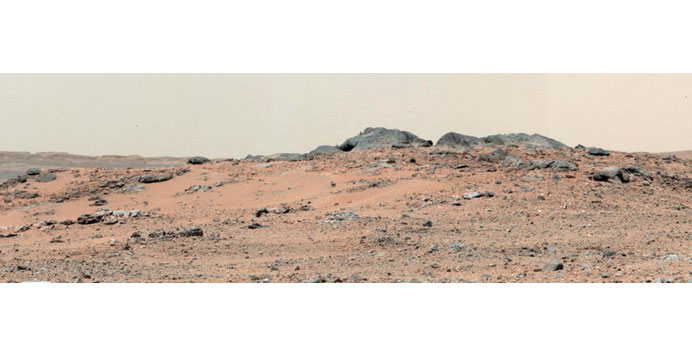International
Curiosity to mark its first ‘Land-iversary’ on Mars
Curiosity to mark its first ‘Land-iversary’ on Mars


By Christina Horsten/Washington
With a celebrated landing on Mars followed by one scientific success story after the other, a compact car-sized robot has become a superstar in the world of science and technology. |
Its name is “Curiosity” and it is now roaming around a huge crater on Mars, having already fulfilled its mission of turning up evidence of the conditions for the possibility of life on the red planet. But with the success of its mission, it has also, amid a massive public relations effort by the US space agency Nasa, helped to add new lustre to the agency’s crusty image.
On Tuesday, the roving robot will mark its first anniversary on Mars. This is already half-time under Nasa’s original plans. But the $2.5bn mission is to be extended for “as long as possible,” says Sarah Marcotte, a member of the mission’s Mars Public Engagement team handling queries from the general public.
“Curiosity has enough fuel to last for about a decade and is built to be robust. Mission length is one Mars year, two Earth years, but we expect it to last much longer,” Marcotte said during a recent mission online chat with Curiosity followers.
Such an outlook is balsam for Nasa’s morale amid painful budget cuts. With the suspension of US manned space missions until new spacecraft are developed, the agency now finally has a new star.
To mark the anniversary, the agency is even going to hold a public party at its Washington headquarters. Nasa chief Charles Bolden and astronauts on board the International Space Station ISS will be shown a video of the highlights of Curiosity’s first year on Mars.
It all began with a breathtaking and daring landing manoeuvre. The most expensive and technologically most advanced probe ever produced by Nasa had travelled a mind-boggling 570mn km. It then came down on Mars in a series of unconventional steps: first a parachute; then a crane hovering in place with the help of small thruster rockets; then a gentle lowering of Curiosity to the Mars surface with cables attached to the crane.
Back on earth, mission controllers had to wait seven long minutes, the time for the data to travel the distance from Mars, before knowing whether the landing had succeeded - or failed.
“For me landing was the most intense moment,” Marcotte said. “We were on the edge of our seats waiting to hear how the seven minutes of terror would end. The feeling when we got that first photo back of the wheel on the ground was one of the greatest feelings in the world.”
Once landed, Curiosity began a series of tests of its equipment, including several cameras, a rock drill, a rotating brush, a laser, and a chemical measurement instrument. And then it got rolling.
Over the past year, the 900-kg rover has sent countless photographs and videos, has weathered Martian storms, survived some computer glitches, and discovered, finally, the conditions that could point to possible microbiological life.
And every step of the way, Curiosity was keeping more than 1.3mn followers informed via Twitter, in an anecdotal and humorous first-person account - ghostwritten by several Nasa staffers.
The rover now is telling its fans that it is looking forward to its “Land-iversary” - the landing anniversary.
Nasa’s scientists, overwhelmed by Curiosity’s successful run, have not yet completely mapped out how the mission will proceed from here. At the moment the rover is heading toward Sharp mountain in the Gale crater where it landed. Sarah Marcotte believes that in all likelihood it will never leave the crater.
“It is a big place - 96 miles (160km) - across, but there is so much to look at, many layers of rock that represent billions of years of geologic history,” she said. “So Curiosity will study one area in depth.”
Joy Crisp, Deputy Project Scientist for the Mars Curiosity Rover Mission, says the main concern now is that the rover stays healthy.
